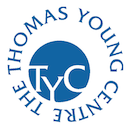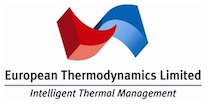We develop approaches and tools to investigate and elucidate peculiar new phenomena that arise from complex many-body effects in materials and molecules. Those phenomena arise in complex experiments, such as near zero temperature for superconductivity, or are part of our every day life, such as the binding of myoglobin to oxygen.
Recent Highlights
Take a deep breath !
Transition metal systems cover a wide-range of systems, and show a breadth of peculiar and interesting properties stemming from many-body effects in solids.
A fair understanding has been obtained in particular with the Zaanen-Sawatsky-Allen (ZSA) theory, which provides a classification of transition metal periodic solids in terms of charge transfer or Mott systems. However, right across the zoology of transition metal systems, lies an important family which is not contained within the ZSA classification, and remains poorly understood: transition metal molecules.
The most common and simplest example is haemoglobin, a metallo-porphyrin system which contains a single iron atom, and binds to oxygen, which is important for the respiration process, and carbomonoxide, which inhibits the respiration function. A consistent physical picture of the ligand binding of haemoglobin is still lacking after three decades of investigation: state-of-the-art approaches based on density functional theory predict a binding to carbomonoxide with a ten thousands times larger affinity than the binding to oxygen, obviously wrong since the latter would make respiration impossible, and also illustrates the failure and limitation of current state-of-the-art modelling approaches for transition metal ion molecules.
We recently developed a consistent approach to elucidate the mysterious properties of these molecules,
this work was published in the prestigious review PNAS
[Read more ...] .
When electron play the musical-chair game in superconductors
The question of how charges pair up in copper-oxide (“cuprates”) high-temperature superconductors has been in debate since the
discovery of high temperature superconductivity in ceramics. This stems from the very rich physics observed in the copper-oxides, and from the subtle quantum many-body effects driven by strong correlations in those materials. Indeed, the cuprates are magnetic insulators, and superconductivity is obtained by doping the materials with extra holes. Experimentally, it is observed that the strong correlations drive many different competing long-range ordered phase upon the doping mechanism, for example, magnetism, superconductivity, stripe orders, checkerboard charge density waves and others.
Theorists have been able to derive minimal models which accounts for some of the here-mentioned phases, the so-called Hubbard hamiltonian. One of the quantum states of matter however has so far resisted this minimal description: a phase where the electron goes through orbital loop currents, chasing each other and cycling in triangular plaquettes defined by a copper and two of its neighbouring oxygen atoms. This phase breaks the time-reversal symmetry, and so far has not been captured by a minimal model containing only in-plane copper and oxygen atoms.
A recent proposition by Ole Andersen suggested however that the mechanism by which electron are transferred between two oxygen atoms might involve contributions neglected so far: the transfer would involve a high energy Cu-4s orbital, neglected in the calculations, and provide a significant contribution to the direct transfer via second-order processes. In a study by TYC researcher Cedric Weber and colleagues from the University of Geneva and the University of California, Riverside, it was found that once this contribution is accounted for, the orbital current quantum phase is stabilised in a minimal Hubbard-like theory, along with superconductivity and magnetism, for reasonable range of physical parameters.
[Read more ...] .
Research Partners







Did You Know?
Quantum levitation is a peculiar response of superconductors to external magnetic fields.
It is well known that BCS Superconductors expell an external magnetic field. However, type 2 superconductors, such as copper oxides, have a more peculiar response: they let part of the external magnetic field penetrate within "vortices" or "flux tubes", and are literrally pinned to the external magnetic field. This phenomena is called "quantum flux locking" or "flux pinning", as shown in this impressive video [link]
Research Outputs
- Orbital Currents in [...] High-T-c Cuprate Superconductors, Weber et al., PRL 102, 017005 (2009)
- Strength of correlations in [...] cuprates, Weber et al., Nature Physics 6, 574 '10
- Vanadium Dioxide: A Peierls-Mott Insulator [...], Weber et al., PRL 108, 256402 '12
- Renormalization of myoglobin-ligand binding energetics [...], Weber et al., PNAS, in Press '14
- Phase Diagram of a Three-Orbital Model for High-Tc Cuprate [...], Weber et al., PRL 112, 117001 '14
Media
Physicists reveal quantum effects in biological oxygen transport
The news blog Nanowerk wrote a paper about our research on oxygen transport.
How quantum mechanichs help us breath
The website Inside Science wrote a vulgarisation of our work explaining how quantum mechanical effects were involved in the respiration process.



